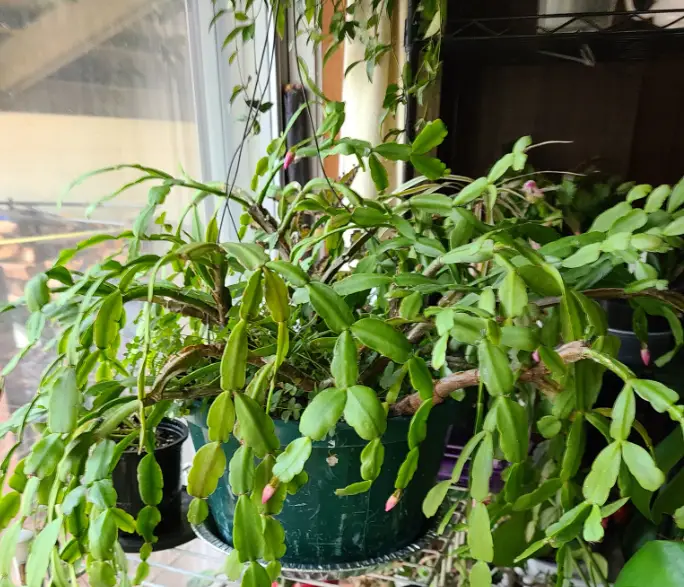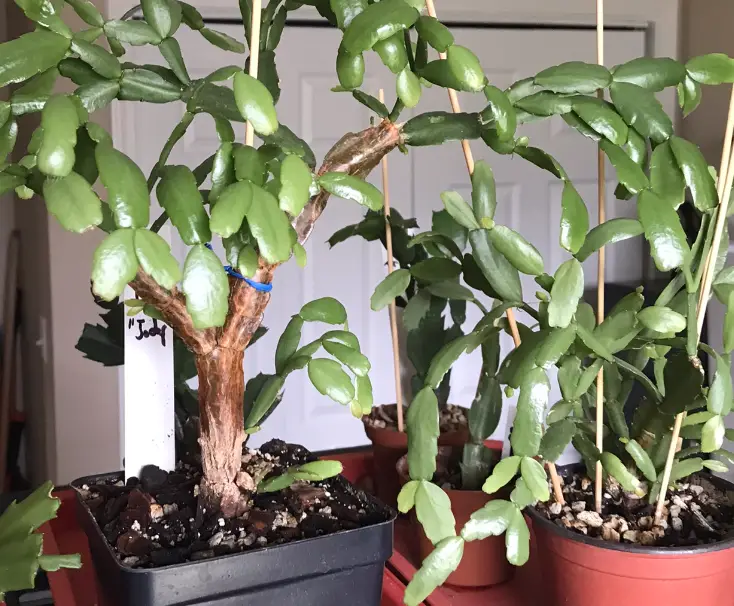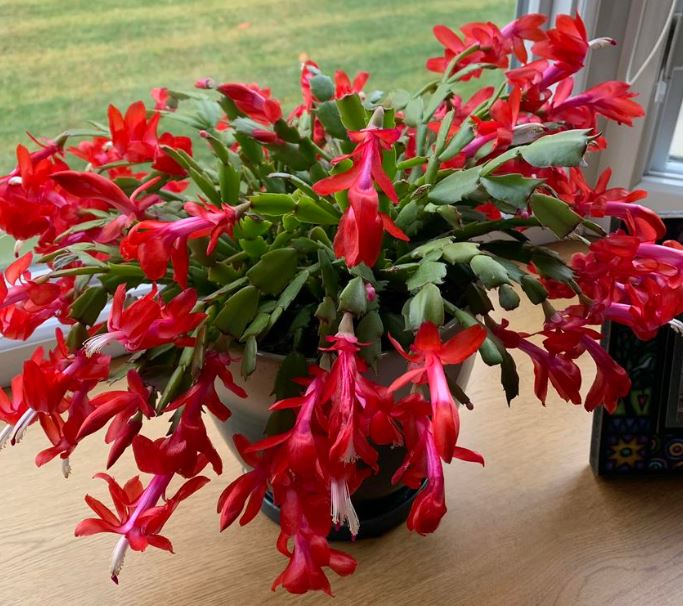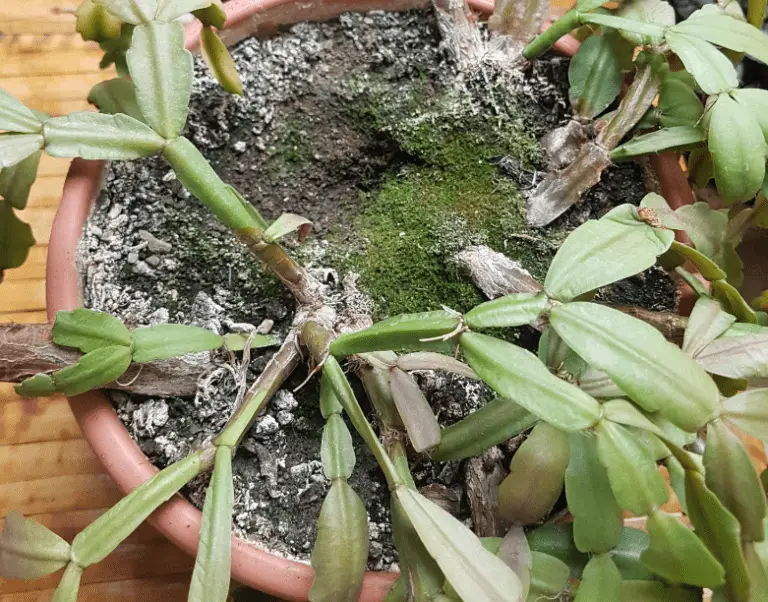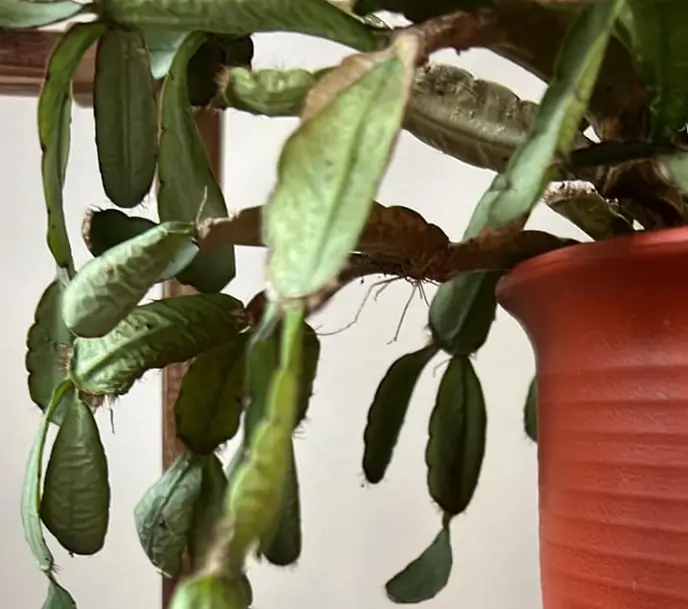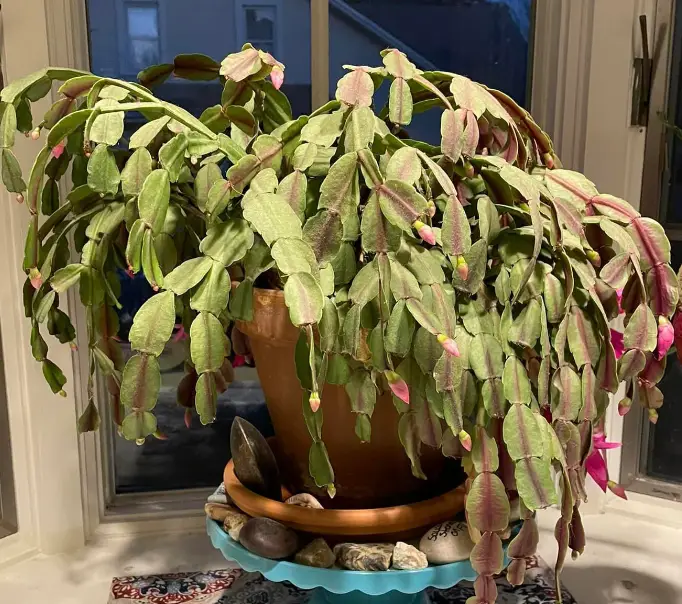Why are the Leaves on My Christmas Cactus Limp? 5 Reason + Fixes
A Christmas cactus is a vibrant plant with thick green stems that bear beautiful flowers during the winter Christmas holiday. Sad-looking droopy leaves indicate the plant is distressed. So, why are the leaves on my Christmas cactus limp?
Incorrect watering, low humidity, high temperatures, pest, and diseases are the main reasons for limp Christmas cactus leaves. Regardless the plant remains healthy, and you can revive it by fixing the underlying problems.
NOTE: Christmas cacti don’t have true leaves but fleshy segments called cladodes that join together to form stems. Many gardeners refer to these stem segments as leaves.
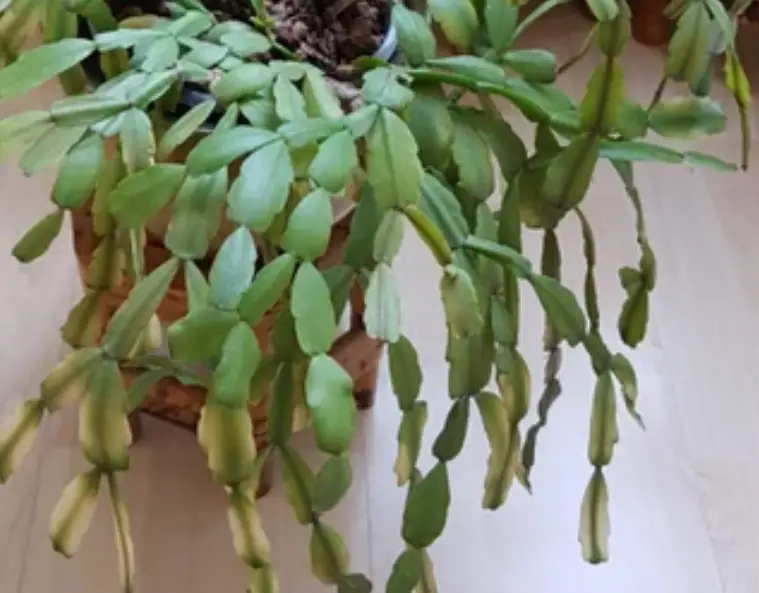
Why are the leaves on my Christmas cactus limp?
Limp Christmas cactus leaves may result from a minor issue like heat stress or a more serious one like an infection. A droopy Christmas cactus can be revived, but you need to establish the reasons behind its ill situation.
According to my research, the following are what causes leaves on a Christmas cactus to go limp and potential fixes to the problems.
1. Heat stress
High temperatures are a common reason why Christmas cactus leaves go limp. This problem is usually temporary and harmless if you act quickly. In their native home, these plants grow under branches of other trees, keeping them cool most of the time.
Heat stress may result from too much direct sunlight or other heat sources in your home, such as fireplaces and heat vents. Prolonged exposure to heat may result in the Christmas cactus wilting, buds or flowers dropping off, and even killing the plant.
How to Fix
Keep your plant away from direct sunlight and other forms of heat. Christmas cactus prefers bright indirect sunlight, a daytime temperature of 70°F (21°C) and an evening temperature of 60-65°F (15-18°C), respectively. A North or east-facing window is usually an ideal spot for this plant.
2. Low humidity
Limp leaves may indicate that your plant is craving air humidity. Christmas cactus prefers 50 to 60 percent humidity. These plants constantly obtain moisture from the air to supplement the moisture in the soil. Drier air in your home can significantly impact the health of holiday cacti plants, and one major sign is a droopy plant.
How to fix
If you suspect humidity levels in your home have declined, you need to increase them artificially. You may use a humidifier, but if you don’t have one, use a spray bottle to mist the leaves of the cactus at least once per day.
You may also boost humidity levels by placing the plant on a pebble tray that is half-filled with water. It is a common way of increasing humidity for plants without a humidifier. As the water evaporates, it creates the needed humidity for plants.
3. Incorrect watering
Drooping Christmas cactus leaves can be caused by under-watering or over-watering. This is a moisture-loving plant that grows as an epiphyte in the tropical rainforest of Brazil. Limp leaves can indicate that you are not providing a sufficient amount of water.
Although the Christmas cactus loves constant moisture in the air and soil, overwatering may also bring problems. Too much water in the soil fills all the air pockets causing roots to suffocate and die. This stops the uptake of water and nutrients, thus affecting the plant’s health.
If you suspect over-watering as the cause of drooping leaves, inspect the Christmas cactus for root rot. A fungal infection can also cause this condition. Additional signs include mushy roots and a foul odor from the soil mix.
How to fix
Mist your cactus if the soil feels dry but do not drench the soil. If you suspect to have overwatered, drain any excess water in the pot and let the soil dry completely before watering again.
If this doesn’t change anything, remove the plant from the pot, and cut off any damaged roots. Then rinse and repot your Christmas cactus in a fresh soil mix. Be sure to clean and disinfect the pot before reusing it.
Water your Christmas cactus only when the top one inch of the soil feels dry to the touch. You may dip your finger in the soil to test. Water the plant heavily and let the excess water drain out of the soil. Don’t let the watered plant sit in any standing water, as it can cause root rot.
4. Dusty leaves
A neglected Christmas cactus may have too much dust on the leaves. Dust makes your holiday houseplant unappealing and interferes with the important physiological processes that keep the plant healthy. Leaves are where photosynthesis and transpiration take place.
Dust accumulating on the plant prevents it from receiving sufficient light, which plays an important role in the process of making food. This typically results in stunt growth or sickly plant with drooping leaves.
How to fix
Wash your Christmas cactus to remove all the accumulated dust on the leaves. Wrap a plastic wrap around the base of the plant to protect the soil while cleaning to avoid directing excess water into the soil.
5. Insect pests
Insect pests are a rare problem for Christmas cactus. However, it’s possible to find aphids, fungus gnats, mealybugs, and spider mites on the plant. They pierce the stems and suck the juice from the plant. This may cause distress and the plant may go limp or wilt.
How to fix
Some pests are microscopic, and you may not see them directly with your eyes. White or black pecks on the stems or a sticky substance are a clear sign of pests on your Christmas cactus. Thoroughly inspect the plant and take a step to stop the pests.
Spray your plant with insecticidal soap on the leaves’ top and bottom sides. Isopropyl alcohol is also effective in getting rid of mealybugs on cacti. Use a cotton swab to apply directly on the pest’s body.
Final Thought
Christmas cactus is undoubtedly a hardy houseplant that doesn’t need so much attention. Leaves going limp is typically a sign that something is wrong. While it is possible to revive your Christmas cactus, you need to pinpoint the exact problem and provide a permanent solution, as discussed in this guide.
References
- North Carolina State University Extension: Christmas Cactus Care
- University of Minnesota Extension: Holiday cacti
- The Pennsylvania State University: Christmas Cactus Diseases
My name is Diane M Lewik, and I am the founder of this website. I am a degree holder in plant biology from the University of California – Berkeley. Over years, I have cultivated a vast collection of succulents and I have learned a great deal about how to grow and care for these unique plants.
